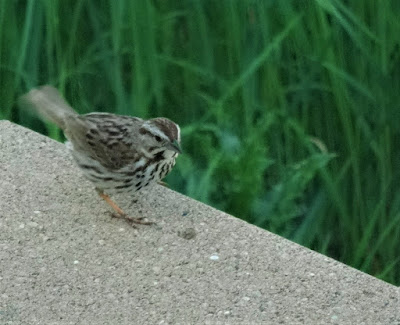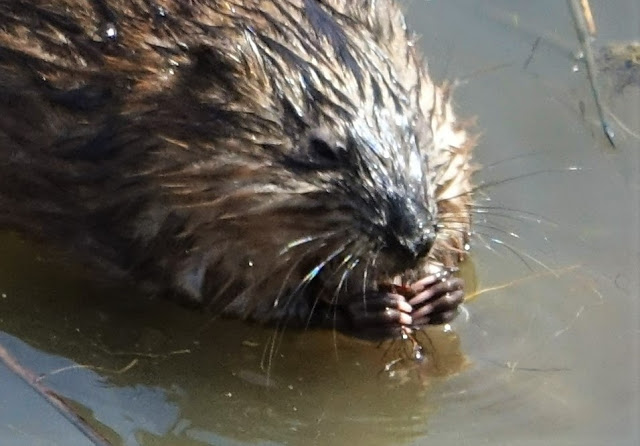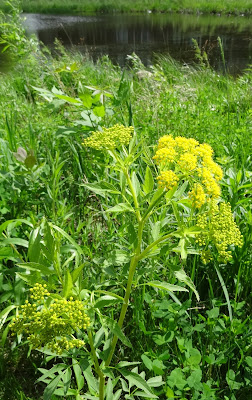Song Sparrow Melospiza melodia live up their binomial nomenclature 'melodia' by singing a delightful song, enthusiatically, and often.
They move along wetland edges like around the pond. I see the males occasionally, but they spend most of the time in dense, low vegetation.






























